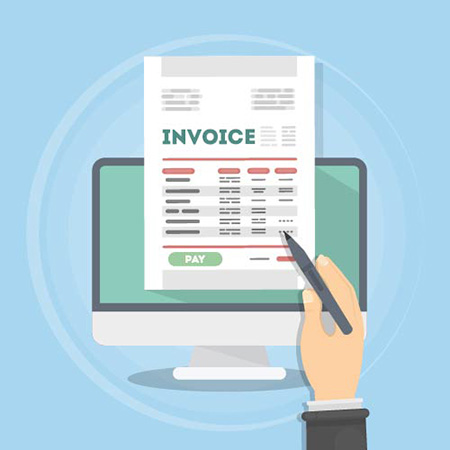How to lighten your workload as a contractor

Here at TaxAgility, we believe that managing your financial affairs can be an extra hassle that contractors simply don’t need, which is why our specialist contractor accountants are on hand to lighten your workload and give you that work-life balance you deserve.
What is a contractor?
Contractors are self-employed individuals who have escaped ‘traditional’ company-dictated working hours by setting up a business for themselves. Contractors offer a specialised service to a wide range of clients. Some examples include writers, carpenters, builders and IT specialists.
Why does a contractor need an accountant?
Running a business means contractors need to market themselves, prepare quotations, fulfil contractual obligations, invoice clients, and also taking care of the administrative function and tax obligation. They are busy individuals who constantly juggling the stresses of multiple roles.
Concerningly, 44% of contractors who took part in a YouGov survey revealed they had missed a personal occasion due to work, while a staggering 10% said they missed their own birthday party due to their workload. A further 11% said that they had missed anniversaries.
Accounts and tax are areas that most contractors do not possess enough knowledge to complete the financial tasks required accurately and efficiently, and this is where an accountant for contractors comes in.
How can accountants help contractors?
Allowing accountants that specialise in helping contractors handle your finances will enable you to focus on growing your contracting business and put your mind at ease, with the assurance that a team of specialists are on the job.
At TaxAgility, our dedicated team of contractor accountants is perfectly placed to lighten the weight of financial administration on contractor’s shoulders. The areas we can assist include:
1. Find a company structure that is best for you
As a contractor, you can choose to set up a limited company or work under an umbrella company. Most contractors prefer to run their own limited company because it is tax-efficient. In this case, we will guide you through the necessary legal requirements and help you to understand your legal and financial responsibilities as a shareholder, director and employee.
2. Manage accounts and bookkeeping requirements
Assisting with bookkeeping, cash-flow forecasts, preparing your monthly management accounts, filing annual statutory, are just some of the tasks we can manage on behalf of you.
3. Contractor tax services
VAT, NI, PAYE, Self-Assessment tax returns, and using dividends to make up a portion of your income are tasks that we can help you with. If you would like to know more about dividends, check out this post "Understanding dividends".
4. IR35 support
IR35 is a mind-bogglingly complex issue that troubles many contractors as there is no definitive guideline that stipulates the conditions of a 'breach'. This means you can read as much about IR35 and still do not know if you are inside or outside the scope of IR35. The best approach is to contact an accountant for contractors like us and discuss your situations in detail.
5. Answer any questions you have
It is natural to ask questions when you run a contractor business. Questions such as should you (and can you) register for flat-rate VAT? What business expenses you can claim as an IT contractor? Can you put a family member on the payroll? - all of them are valid questions deserve honest answers from our accountants.
6. Keep you out of legal trouble
There are many tax deadlines associating with setting yourself up as a contractor and running a business; we can help you to submit all the necessary documents before the deadlines to avoid fines. Moreover, while we strongly believe in helping contractors being tax-efficient, we do not practice creative accounting that will raise questions from HMRC.
7. Peace of mind
With us working alongside you, you do not have to spend needless hours managing headache-inducing financial tasks. This means you can focus on matters that are important to you, like amplifying your business visibility and driving the success of your contracting business.
TaxAgility is here for contractors
With three offices across London - we are in Putney, Richmond and Central London, our team of accountants specialise in contractors can manage your accounts and financial tasks for you. To find out how we can help, call us today on 020 8108 0090 or get in touch with us via our contact page to arrange a complimentary, no-obligation meeting.
If you found this interesting, you may also enjoy:
- IT Contractor Tax: what do I have to pay?
- Tax planning tips for self-employed contractors
- Moving from permanent employee to full-time contractor
This post is intended to provide information of general interest about current business issues. It should not replace professional advice tailored to your specific circumstances.
How contractors should invoice for expenses

Knowing how to invoice for expenses when you first start out as a contractor, regardless of your profession, is crucial to ensure that you keep up a professional appearance and can breeze through the first few months of your contracting career.
As a contractor, you are likely to incur a few expenses when providing your services to clients. For example, you may need to travel and visit premises in another town (an expense which you incur), or you may need to purchase a piece of equipment on behalf of your client (a disbursement which you will invoice). To help you navigate the expense and disbursement process, our accountants for contractors in London at TaxAgility share three common methods that you are likely to encounter when invoices your clients for your expenses.
Adding VAT
Regarded as the simplest invoicing method, adding VAT involves charging VAT on any expenses you have incurred while working or carrying out your services for your clients, such as hotel stays, public transport expenses and mileage. In this case, you add the VAT regardless of whether or not you were charged VAT on these items in the first place.
For example, you performed £2,000 worth of work for your client and you incurred £40.00 in petrol cost due to driving out to an in-person meeting with your client (a cost they had agreed to reimburse), you would invoice them £2,448 and the breakdown is as follows:
- £2,000 for the work
- £40 for petrol cost
- £408 (20% VAT on £2,040)
Splitting VAT
In the event that your clients do not like the above method as they are paying VAT on the petrol cost twice, then you will need to remove any VAT you paid on expenses you claim back from them, then applying VAT to your final, gross invoice.
Let’s say you performed £2,000 worth of work for your client, and you also paid £1,200 (with VAT) for a training course which your client suggested you attend and promised to reimburse you for. In other words, the training cost is actually £1,000 + VAT £200.
In this case, you will invoice your client £3,600 and the breakdown is as follows:
- £3000 (£2,000 for the work + £1,000 for the training cost)
- £600 (20% VAT on £3,000)
Disbursement
Disbursement payments occur when you purchase something on behalf of your client and pass that cost over to them in your invoice. In this instance, you do not charge VAT on the items and you cannot claim back any VAT.
As explained by HMRC, there are various rules surrounding disbursement including:
- You paid the supplier on your client’s behalf and acted as the agent of your client.
- Your client received, used or had the benefit of the goods or services you paid for on their behalf.
- It was your client’s responsibility to pay for the goods or services.
- You had permission from your client to make the payment for the said goods or services.
- Your client knew that you were not the supplier of the goods or services.
- You show the costs separately on your invoice.
- You pass on the exact amount of each cost to your customer when you invoice them.
- The goods and services you paid for are in addition to the cost of your own services.
Here is an example: you performed £2,000 worth of work for your client and you incur £40 in petrol costs which the client would pay. To do the job, your client also asked you to purchase a piece of electronic (a Geiger counter worth £200) which they would need in the project. You will invoice £2,648 and the breakdown is as follows:
- £2,040 (£2,000 for the work done + £40 petrol expenses)
- £408 (VAT on £2,040)
- £200 (Geiger counter disbursement)
How can TaxAgility help contractors?
At TaxAgility, we understand that contractors are constantly juggling different tasks at once, which is why we want to step in and help. With the assistance of our dedicated accounting and tax services for contractors, you can focus on building your business while we manage your financial and tax affairs.
Our contractor tax and accounts services include:
- Setting up a limited company to help you get started
- On-going accounts and bookkeeping management for contractors
- IR35 support for contractors
- Construction Industry Scheme (CIS) support
- Corporate tax advice
- Self-Assessment tax returns
- Personal investments
If you would like to arrange a one-to-one meeting to discuss any tax or invoicing queries you might have, we offer a no-obligation, free consultation. Contact us today on 020 8108 0090 or get in touch with us via our Contact Page.
If you found this useful, take a look at:
- Understanding dividends
- IT contractor tax: What do I have to pay?
- Business expenses you can claim as an IT contractor
This post is intended to provide information of general interest about current business issues. It should not replace professional advice tailored to your specific circumstances.
Everything you need to know about crowdfunding

Crowdfunding platforms connect businesses and investors, allowing ideas to develop and companies to flourish, but is it for you? Read on to find out.
The internet has changed many of the ways we do business and live our daily lives and unsurprisingly, it has also opened up new avenues in which we acquire fund or invest in things that interest us.
In the UK, crowdfunding is undoubtedly popular with hundreds of millions raised within just a few years. Businesses have used crowdfunding to launch new products and expand, while individual investors can now support ideas and hope that they can make more than what they have put in. It isn’t just for business too – artists, writers, filmmakers, as well as those in need can also use crowdfunding sites to raise fund.
In this article, we aim to discuss:
- What is crowdfunding?
- The four common types of crowdfunding
- The risks of crowdfunding
- Can investors get tax relief?
- EIS and SEIS
- Should you list your business on crowdfunding?
What is crowdfunding?
Crowdfunding refers to a method of raising finance by asking a large number of people each for a small amount of money. In most cases, crowdfunding takes place on an online platform where a business or an individual can create a campaign to raise funds.
If it is a business project, the company usually includes an overview of the business plan, details of the management, and the amount that they hope to raise. If you invest, you may get a reward (the finished product, for example) and/or some shares in the company. In some instances, you may also get your money back plus interest – this is also known as peer-to-peer lending. While there are investors who just want to support an idea (especially an innovative one), most investors do hope to make a good return on investment.
As crowdfunding allows anyone to present an idea to a large group of people, savvy business people also use the process to test out their ideas and gather insight.
Crowdfunding is also not restricted to new ideas or products – there are plenty of companies conducting a second or third round of funding to spur growth.
Then there is the humanitarian side – GoFundMe is the largest platform for this and it has helped organisers raise over US$5 billion to help someone in need.
The four common types of crowdfunding
1. Equity-based
In essence, you invest in a company and receive shares of the company in return. There are usually two types of shares on offer – with and without voting or pre-emption rights. If the company does well, your shares will increase in value and you make a good return when you sell them. However, if the company fails, you will lose your investment. Also, it must be said that the company involved may not issue shares directly to you, but to a nominee company (usually a company set-up by the platform).
2. Reward-based
A highly popular model, this will see you invest a small amount of money and receive a reward at a later stage. The size of the reward often corresponds to the amount contributed. For example, you may get an ‘e-hug’ for a £10 contribution or a finished product for a £200 contribution.
3. Donation-based
This model sees you donating money to a person, charity, community or cause without expecting any reward in return, except in knowing that your donation can help to make a difference.
4. Loan-based or peer-to-peer (P2P) lending
In this model, you lend a business some money and expect to receive the money back plus interest.
The risks of crowdfunding
- The target amount may not reach
Every project sets a target amount and if the project cannot attract enough investors before the deadline, then those who have already invested will get their money back, but the project will not be able to move forward. - The business may fail
Investment is inherently risky, more so when young companies are involved. It is said that 30% of new businesses fail in the first two years of operating, so there is a good chance that you may lose your money. - Investors may not be able to sell the shares
If the company remains unlisted, it is not easy to find another buyer to purchase the shares. - Dividends are unlikely
If the company becomes profitable, it may distribute the profits to its investors in the form of dividends. However, most companies listed on crowdfunding platforms are in the early stages and they tend not to make enough to pay dividends. - The platform may fail
In the UK, several notable platforms have gone bust, leaving both companies and investors frustrated. - Ideas may get stolen
As companies get much attention on crowdfunding sites, it is highly possible that others may take the opportunity to copy and improve upon the original ideas. - Learning curve
In most instances, companies involved do not issue shares directly to the investors but to a nominee company (usually a company set-up by the platform). Both companies and investors not familiar with this arrangement will need to educate themselves quickly.
Can investors get tax relief?
In the UK, the government has rolled out four types of schemes to help companies raise funds and they are:
- The Enterprise Investment Scheme (EIS)
- The Seed Enterprise Investment Scheme (SEIS)
- Social Investment Tax Relief (SITR)
- Venture Capital Trust (VCT)
Among them, the Enterprise Investment Scheme (EIS) and Seed Enterprise Investment Scheme (SEIS) are specially designed for small companies with a higher risk to raise fund. How it works is that investors who purchase new shares in these companies can claim tax relief. If you are interested in this, keep a lookout for companies listed on crowdfunding sites with the words EIS or SEIS-approved.
Enterprise Investment Scheme (EIS)
Under this scheme, you (the investor) make an investment that is locked for a minimum of three years to qualify for the benefit. The scheme allows you to claim up to 30% income tax relief on investments up to £1 million per tax year, and you do not have to pay Capital Gains Tax if you sell them after three years. Here is a simplified example:
- You invest £10,000 in a company and you can claim back £3,000 (30%) in income tax relief. You must submit the claim as part of your self-assessment tax return.
- After three years, if you sell your shares for £20,000, you do not have to pay Capital Gains Tax.
- In the event that the company goes bust, you can offset the losses against income.
EIS can get very complicated in practice, so it is best to call us up on 020 8108 0090 and discuss any questions you may have pertaining to EIS.
Seed Enterprise Investment Scheme (SEIS)
Similar to EIS, SEIS allows small businesses to raise fund easily by offering investors tax relief. But unlike EIS where qualified companies tend to be bigger (with less than £15 million in gross assets and less than 250 employees), SEIS is used solely by start-ups that are less than two years old, have less 25 employees and less than £200,000 in gross assets. The maximum amount a company can raise under SEIS is also limited to £150,000.
Under this scheme, the investment made is also locked for a minimum of three years. Here is a simplified example:
- You invest £1,000 in a company and you can claim back £500 (50%) in income tax relief. You must have received an SEIS3 form from the company which you have invested before you can claim tax relief through your self-assessment tax return.
- After three years, if you sell your shares for £2,000, you do not have to pay Capital Gains Tax.
- If the company goes bust, you will receive some loss relief (which is a certain percentage of your investment multiple by your tax rate).
SEIS can also become complicated quickly, so give us a call on 020 8108 0090 and let us understand your situation first before recommending how you should go about claiming your tax relief and/or loss relief.
Should you list your business on crowdfunding?
If you have tried raising fund from banks and angel investors but without much success, then it is worth getting your business listed on one of the crowdfunding sites. But before you do that, it is best to answer the obvious question – why did your application get rejected in the first place? The people who will back your business on a crowdfunding platform are investors – meaning they are more likely to part with their money if they can see a good return on investment. So perhaps it is wise to spend some time to improve your product or service and make it more appealing before you list your business. Also, rewrite your business case if necessary.
Having said that, you must consider carefully what you can offer to your investors realistically. Will it be equity-based or reward-based? Perhaps a combination of both? If it is equity-based, do you want to have two categories of shares (with and without voting or pre-emption rights)? Do you need a nominee company?
Most importantly, the temptation to offer generous perks for larger investments is ever-present, so how do you know that you have inadvertently over promised your investors? These hard questions deserve clear answers from independent small business accountants at TaxAgility, and one of our small business specialists will be delighted to help you run through some figures and answer any questions pertaining to share structure.
If you would like to know more about funding options, this article The complete guide to business funding makes a good read.
Get advice from TaxAgility
Though it has a fair share of risks, crowdfunding has connected many investors and companies. It has helped companies turn their ideas into realities and facilitate growth. It has also given individuals like you and I a chance to invest and receive tax relief.
If you are a company director who needs help with numbers before listing your business on a crowdfunding site, or if you are an investor wanting to understand how EIS and SEIS can work for you, call your local London accountants on 020 8108 0090 use our Online Enquiry Form.
If you enjoyed this, you might also like:
- Understanding dividends
- The complete guide to business funding
- Small business: 5 ways to get new customers
This post is intended to provide information of general interest about current business issues. It should not replace professional advice tailored to your specific circumstances.
Understanding dividends

When a company makes a profit, it pays dividends to its shareholders.
If you are a contractor or have recently started your own limited company, you have probably heard from other contractors or business owners about taking a low salary and using dividends to make up a portion of your income.
At TaxAgility, our small business accountants work with contractors and small business owners across London. As we are often asked about the advantages of taking dividends from a business’ profit, we aim to discuss dividends in this post.
What are dividends?
Dividends are money paid by a company to its shareholders after it has met its financial obligations (like paying business expenses and taxes). Another way to look at it is that when a company makes a profit, it usually retains a portion of its profit and distributes the rest to its shareholders in the form of dividends.
Why contractors and small business owners like dividends
The main benefits of dividends are:
- Unlike salary, dividends are not subject to National Insurance Contributions (NICs)
- The first £2,000 of dividends are not taxable
- Dividends have a lower tax rate than salaries
For tax year 2019/20, dividend tax rates are:
- 7.5% (up to £37,500)
- 32.5% (£37,501 - £150,000)
- 38.1% (over £150,000)
If you intend to declare dividends, you must hold a board meeting and minute it whenever you make a declaration. Then your accountant will prepare a dividend voucher for each company shareholder stating the net dividend paid.
Prior to the tax year 2016/17, the was something known as a notional 10% tax credit but HMRC has abolished this.
An example of dividend tax
In the tax year 2019/20, you receive a salary income of £8,600 and this is not subject to tax because the income is below the Personal Allowance threshold of £12,500. This also means you still have a balance of £3,900 left to use.
In the same tax year, you receive dividends worth £15,000 and out of this amount, you only need to pay a low 7.5% tax rate on £9,100. This is because:
- £3,900 of your £15,000 dividend income is tax-free since you have this balance from your Personal Allowance (£12,500 Personal Allowance minus £8,600 salary income)
- Another £2,000 of your £15,000 dividend income is also not taxed as you have a £2,000 Dividend Allowance
The upshot of it is you are only required to pay £682.50 tax on your £15,000 dividend income. This low rate is not achievable if you are drawing a salary. You must then declare this dividend income on your Self Assessment tax return in the ‘Dividends’ section.
IR35
If you are a contractor, chances are you already know how confusing IR35 can be. If you are considered a “disguised employee” under IR35, you will face severe tax implications. If IR35 is stressing you out, please set up an appointment with us so we can understand your situation better. Alternatively, our post “What is IR35? A brief guide to the IR35 legislation” may make a good read.
Professional advice on dividend distribution
To speak with a professional to discuss how to successfully distribute dividends to your shareholders and to maximise your take-home pay, contact one of our small business accountants in London today. You can call us on 020 8108 0090 or get in touch with us via our contact page to arrange a complimentary, no-obligation meeting.
If you liked this post, you might also enjoy:
- The complete guide to buying a small business
- The complete guide to business funding
- Small Business: 5 ways to get new customers
- Five ways to improve your company’s cash flow
This post is intended to provide information of general interest about current business/ accounting issues. It should not replace professional advice tailored to your specific circumstances.
10 things to avoid when starting a business

According to the Office for National Statistics, just 41.4% of UK businesses survive after five years (Statistical bulletin: Business demography, UK, 2015). There are many reasons why companies fail, from running out of cash to inappropriate partnerships.
Entrepreneurs know that there are many factors contributing to the success of a business, from having a secured financial foundation to exceeding market expectations.
Whether you are a developer working on the next photo app, a solicitor championing the rights of individuals or a hipster opening a new café in the heart of London, chances are you will learn something new almost every day about your business, especially in the early stage.
At TaxAgility, our small business accountants have years of experience working with entrepreneurs across London, helping them to launch and grow their business with our extensive financial knowledge. It is through this process that we see our clients encountering common pitfalls that most start-ups face, so in this article, we aim to discuss the top 10 things you should avoid when starting a business.
The 10 common start-up pitfalls
1. Failing to choose the right legal structure for your business
Before you start trading, take a moment to select and implement the right legal structure for your business. This decision can determine the success of your business and should be made with the assistance and guidance of a professional advisor like our Accountants here at TaxAgility or someone with equal qualifications.
The reason is obvious: if you have set-up as a sole trader and the business has experienced some difficulties, creditors can come after you directly and take your personal assets. This is because as a sole trader, you have unlimited liability for business debts, given that there is no legal distinction between private and business assets.
Another thing to consider is that not all legal structures are taxed the same. Limited companies are widely considered to be more tax-efficient in comparison to sole trading and partnerships. This is because a limited company has a lower tax rate than personal tax. The corporate tax rate is 19% for tax year 2019/20 and 17% for tax year 2020/21. In comparison, the personal tax is 20% for basic rate and it quickly goes up to 40% and 45% depending on how much you earn.
As a director of a limited company, you can also draw a low salary and choose to use dividends to form part of your income, because dividends have a lower tax than salaries and they aren’t subject to National Insurance contributions, meaning your tax obligation is reduced.
2. Ignoring flat rate VAT
Flat rate VAT is welcomed by many start-ups who have an annual turnover of less than £150,000 in the first year because it simplifies your VAT accounting process and with less work on bookkeeping, you can concentrate on growth.
Essentially, this scheme allows you to pay a fixed VAT rate to HMRC and you keep the difference between what you charge your customers versus the VAT you pay to HMRC. You can’t claim VAT on purchases, however, except for selected capital assets over £2,000. To find out more about how this scheme works, you can read our article 'Understanding the VAT Flat Rate Scheme'.
3. Failing to take advantage of tax incentives/relief such as the Annual Investment Allowance
The Annual Investment Allowance (AIA) is a form of tax relief for UK businesses, and it allows you to deduct the full value of a piece of qualifying business equipment from your profits before tax.
It is possible to claim AIA on most machinery (see this Gov.uk page for the complete list). The AIA amount has been temporarily increased to £1 million between 1 January 2019 and 31 December 2020. The aim is to help small businesses get a footing in the business world. If you would like to know more about AIA, follow this link to “Annual Investment Allowance explained: Tax relief for small businesses”.
4. Failing to factor in all costs
You may have heard of stories from entrepreneurs who hastily left a permanent role to launch a business, only to realise that they cannot sustain the operation. In the UK, it is said that most start-ups spend over £22,000 in their first year on costs to get started – this amount excludes costs that are associated with business-specific activities like marketing and fulfilment. Because costs have a direct impact on company profitability, business owners must find ways to control them.
If you would like to understand different types of cost and learn the seven useful tips that can help you to manage costs, this article “Small Business: managing rising costs” makes a good read.
5. Failing to keep on top of cash flow
The moment you start to trade, the flow of cash coming in and going out of your business becomes a natural cycle that keeps your company going. Cash flow is an indication of your company’s health, and the beauty of it is that you can plan in advance to ensure that you always have cash in hand to meet any financial obligations. This plan, widely known as cash flow forecast, looks at projected expenses and income for the next 12 months and can include various ‘what-if’ scenarios.
In this article “Five ways to improve your company’s cash flow”, we explain what cash flow is and share five useful tips that business owners can use to manage cash flow. Follow the link to have a read, especially if cash flow is keeping you awake at night.
6. Failing to use the full potential of employees
In this day and age, both new start-ups and established small companies need employees who can adapt to the ever-changing market needs and are willing to take initiatives to see things through. The problem is not many employees possess that quality. At the same time, most start-ups and business owners do not have the time to review every employee constantly, leading to a greater disparity between company goals and those who are supposed to work toward achieving the goals.
Three common ways which you can use to help employees stepping-up to the challenge are:
- Developing their decision-making abilities
- Creating a supportive work culture
- Training
Having said that, we are also realistic and must point out that not every employee can reach his or her full potential in this particular point of their career journey. If the weaker employees are causing stronger employees issues and if you are not doing something about it, chances are, the stronger employees will leave. So keep a watchful eye and make sure that your strong employees are supported and can continue to contribute positively.
7. Being wasteful
Most start-up owners would like to think that their operation is optimised, but in reality, waste and inefficiency are common in every business.
If you have bought a fleet of new vans ready to deliver goods or have splurged £200,000 on an e-Commerce site with all the latest bells and whistles before making a sale, then it is time to examine what the business can afford and create realistic growth targets.
8. Failing to outsource when the need arises
Outsourcing is one of the best ways to achieve higher efficiency without a significant commitment. Most small business owners outsource the IT and accounting functions as soon as they start trading, allowing the business to utilise experts in these areas without having to hire full-time staff.
At TaxAgility, we help entrepreneurs across London with accounting and tax-related services, so you can concentrate on running and growing your company. The areas we cover include accounting and bookkeeping, payroll, tax planning, VAT, and management consultancy. We provide these services without any hidden costs and in most instances, you only pay an affordable monthly fee.
9. Failing to network
“Opportunity knocks through relationship building.” A client told us this phrase and we love it. Networking, at its core, is not about making a temporary connection for the sake of making a sale. Instead, the focus is on building relationships. In London, there are thousands of networking groups which readily welcome new members. Start by visiting a few and seeing which one is best suitable for you. Additionally, attend trade shows and conferences to make new contacts.
Networking can be extended to online too. LinkedIn is ideal for entrepreneurs who want to create more connections. For more about networking, take a look at this article “How to grow your business: Networking”.
Bear in mind that reciprocity is key in networking. When you make a new contact, there is a potential for you to reach out to all the friends and business associates that the individual has made. Equally, you must be prepared to introduce your contacts to the individual too.
10. Not having a business mentor
Building a business from scratch is no easy task, and many entrepreneurs stay so focus that they develop tunnel vision. At this point, having a business mentor available to discuss various issues with you is highly beneficial. This mentor can be anyone who has years of experience running various companies – it could be a serial entrepreneur, a professional business coach, a turnaround specialist, or even a chartered accountant like us. This mentor should provide independent and objective advice, even though the advice may not be something that you would like to hear.
Areas that you may consider getting advice also vary and may include:
- How to take your business to the next step?
- What can you do to improve productivity and skills?
- How to access additional funding?
- What should you consider when developing a new product?
- How to expand your business overseas?
TaxAgility’s accountants for small businesses
Launching a business is taking a big step toward realising your dream. At TaxAgility, we can support you and your business in many ways that can facilitate the process of building your business.
From establishing a limited liability company, preparing your accounts, answering tax planning questions, sorting out payrolls to controlling costs, our team of expert small business accountants is with you every step along the way.
We believe that your success is also our success, which is why we take the time to understand your business first. And with us working beside you, you can focus on other elements of your business endeavour. Contact us today on 020 8108 0090 or get in touch via our Contact Page.
This article was updated on 02/10/19.
If you liked this post, you might also enjoy:
- The complete guide to business funding
- Small Business: 5 ways to get new customers
- Five ways to improve your company’s cash flow
This post is intended to provide information of general interest about current business/ accounting issues. It should not replace professional advice tailored to your specific circumstances.


